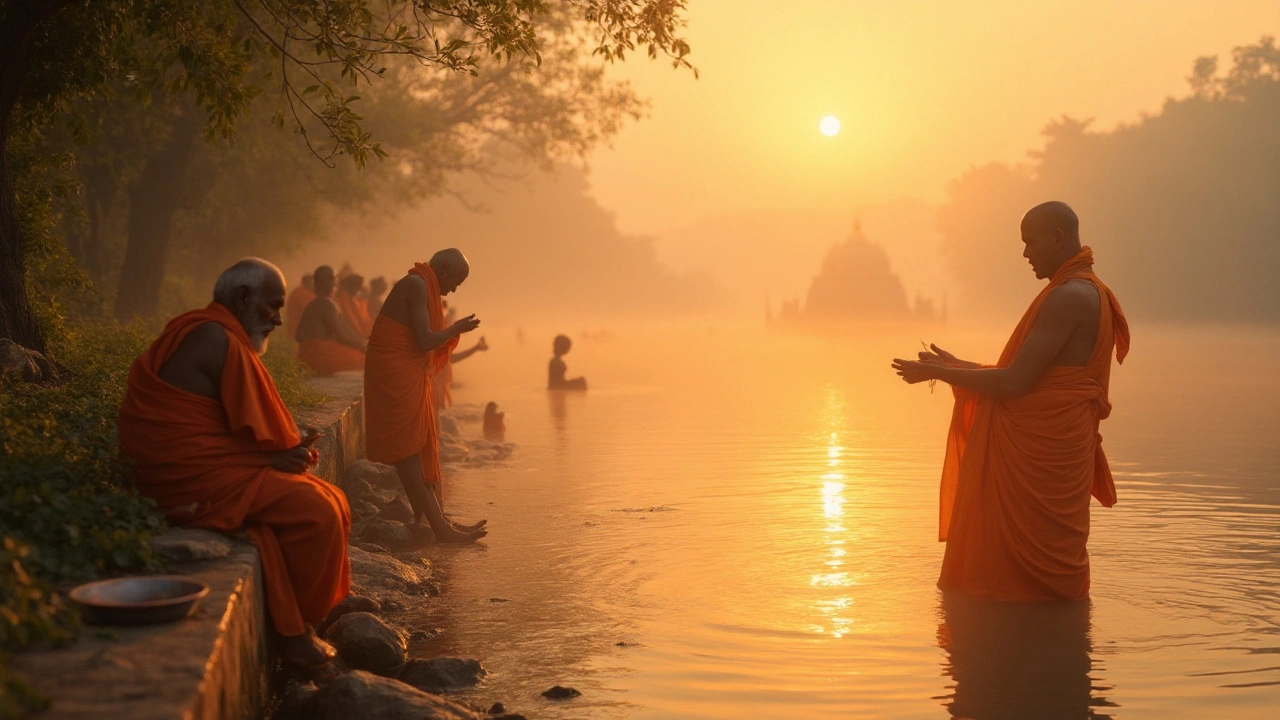Sacred Rituals India – What They Are and Why They Matter
India is packed with rituals that mark birth, marriage, death, and seasonal festivals. Each ritual is a mix of prayer, offering, and community action. If you’ve ever wondered why families light lamps or why there’s a big feast after a wedding, this guide breaks it down in plain language.
Everyday Rituals You See Around the House
Most Indian homes start the day with a small puja (prayer) at a corner altar. People light a lamp, offer incense, and say a short mantra to the family deity. The ritual is quick—just a few minutes—but it sets a calm tone for the day. You’ll also see people wash their hands and feet before entering the prayer space; it’s a way of leaving outside worries behind.
Another daily habit is the prasad offering. After a simple prayer, a small piece of sweet (like jaggery or coconut) is offered to the deity and then shared with everyone. This act reminds participants that blessings are meant to be shared, not hoarded.
Special Ceremonies That Bring Whole Communities Together
When a child is born, families perform the Namkaran naming ceremony. A priest or elder whispers the chosen name into the baby’s ear while relatives chant blessings. The event usually includes a sweet rice dish called kheer, symbolizing prosperity.
Marriage in India is famous for its many steps. The most visible part is the pheras, where the couple circles a sacred fire seven times, each round promising a vow. Guests toss rose petals, and a communal feast follows, reinforcing the idea that two families, not just two people, are joining.
During the festival of Diwali, millions light oil lamps and burst fireworks. The core ritual is the Lakshmi puja, where people pray for wealth and health. The ritual’s timing—after the new moon—links it to the lunar calendar, showing how astronomy and spirituality mix in Indian practice.
Another big gathering is the Kumbh Mela, held every 12 years on riverbanks. Pilgrims take a dip in the holy water, believing it washes away sins. The river itself becomes a sacred stage, and the event draws millions, proving how a single ritual can shape an entire economy and culture.
Even death is marked with specific rituals. The Antyesti or last rites involve cremating the body while chanting mantras. Family members scatter the ashes in a river, completing the cycle of life and tying the departed back to the earth.
All these rituals share a simple pattern: a symbolic act, a spoken or sung word, and a communal sharing of food or space. Whether it’s a quick morning puja or a massive festival, the goal is the same—connecting the individual to something larger.
If you’re attending a ritual for the first time, here are three quick tips: dress modestly, follow the lead of locals, and bring a small offering like fruit or sweets if you can. That’s all you need to show respect and join the experience.
India’s sacred rituals might look complex, but at their heart they’re everyday ways to pause, give thanks, and bond with others. Next time you see a lamp being lit or hear a chant, you’ll know the simple purpose behind it—bringing calm, hope, and community together.
